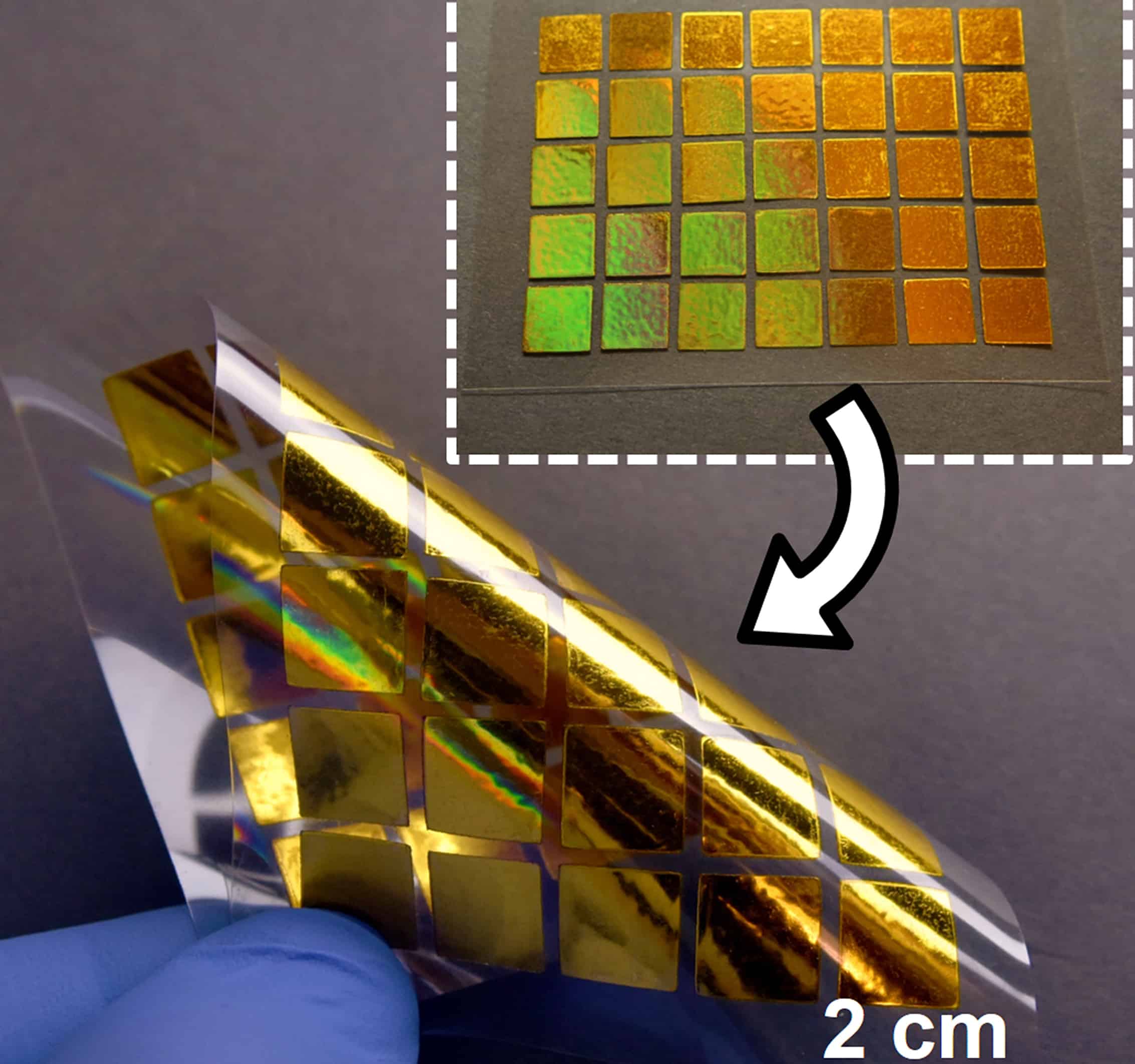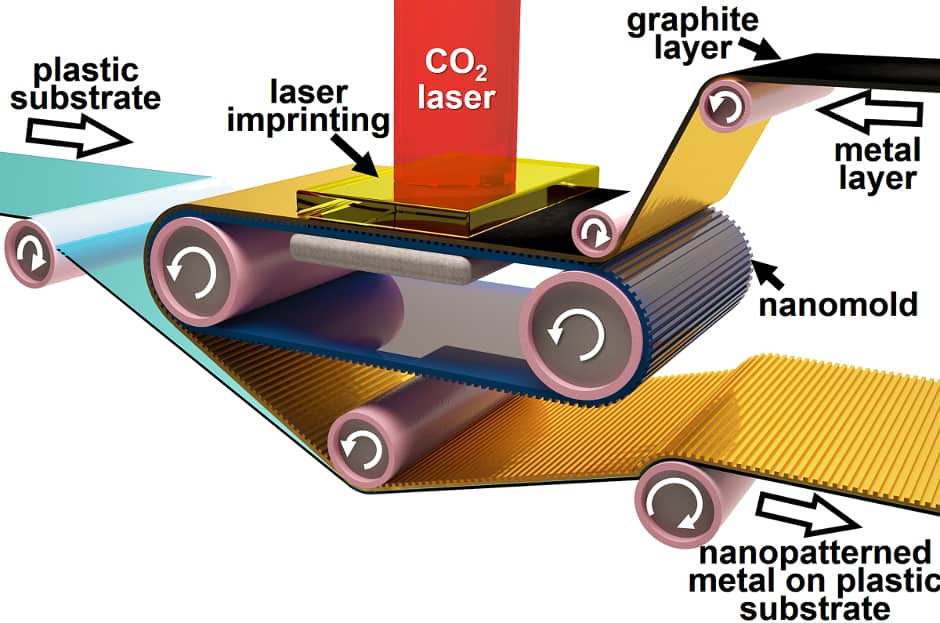
The low-cost process, developed by Purdue University researchers, is said to combine existing tools for manufacturing metals on a large scale, but uses the speed and precision of roll-to-roll printing to remove certain fabrication barriers in making electronics faster than they are today.
Future devices will require much smaller metal components, which calls for a higher resolution to make them at the nanoscale.
"Forming metals with increasingly smaller shapes requires moulds with higher and higher definition, until you reach the nanoscale size," said Ramses Martinez, assistant professor of industrial engineering and biomedical engineering. "Adding the latest advances in nanotechnology requires us to pattern metals in sizes that are even smaller than the grains they are made of."
This so-called "formability limit" hampers the ability to manufacture materials with nanoscale resolution at high speed.
Another drawback is that the method of fabricating internal metallic circuits generates circuits with rough surfaces that can cause electronic devices to overheat and drain their batteries faster.
Purdue researchers have addressed low resolution and roughness with a new large-scale fabrication method that enables the forming of smooth metallic circuits at the nanoscale using conventional carbon dioxide lasers.
"Printing tiny metal components [roll-to-roll] makes them much smoother. This allows an electric current to travel better with less risk of overheating," Martinez said.

Writing in Nano Letters, the team said their low-cost, scalable nanomanufacturing process enables the continuous forming of thin metallic layers with nanoscale accuracy using roll-to-roll, laser-induced superplasticity (R2RLIS).
R2RLIS uses a laser shock to induce the ultrahigh-strain-rate deformation of metallic films at room temperature into polymeric nanomoulds, independently of the original grain size of the metal.
According to the Letter, the nanoforming method does not require access to cleanrooms and can be implemented on conventional CO2 lasers to fabricate uniform and three-dimensional crystalline metallic nanostructures over large areas.
Tuning the laser power during the R2RLIS process enables the control of the aspect ratio and the mechanical and optical properties of the fabricated nanostructures.
"In the future, the roll-to-roll fabrication of devices using our technique could enable the creation of touch screens covered with nanostructures capable of interacting with light and generating 3D images, as well as the cost-effective fabrication of more sensitive biosensors," Martinez said.

AI-generated medical responses need monitoring, study finds
This would negate most of the benefit of using AI in the first place, rather like the Locomotive Act 1865 that required any self-propelled road...